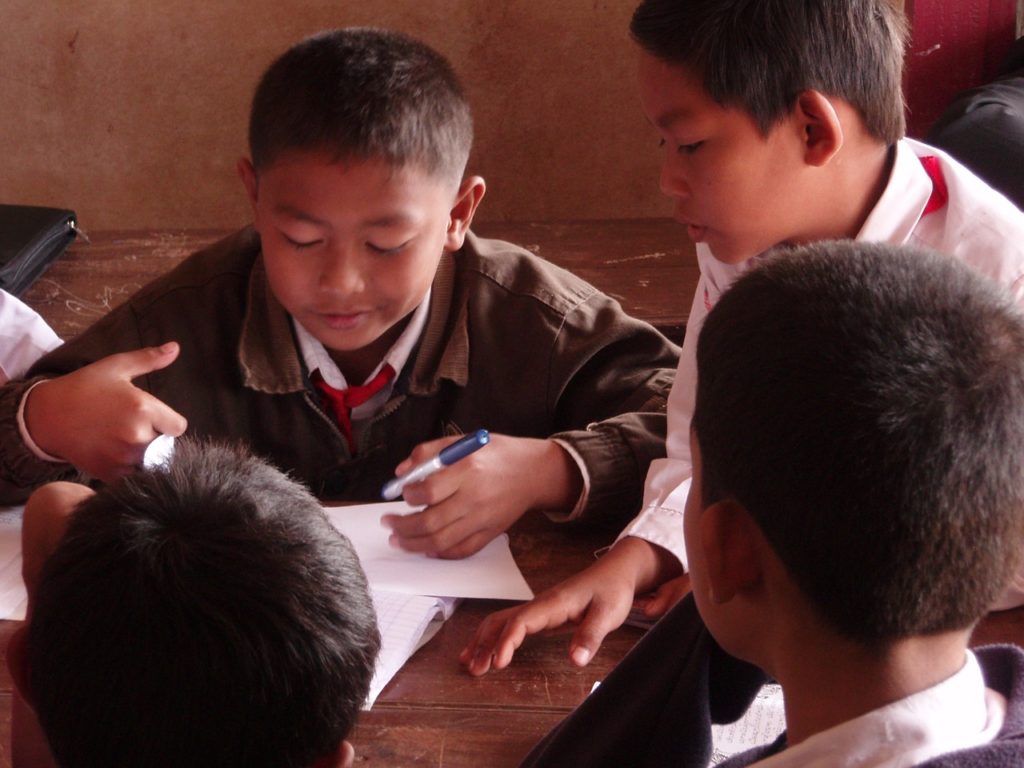
Ordered Chaos: How to have fun with groups and still accomplish your goals
“Oh my word! WHAT is going on in here?!” These were the panic-stricken words spoken by an English teacher who walked in to my room during a Biology lab. It was in my first few years of teaching and I had lost total control of the situation. Students were walking around the room, inviting others to a party that weekend while a game of paper wad basketball was taking place at the front of the room; complete with a full court press. Impressive in gym class, but chaos in a Biology room. If there had been a fire drill, we would not have been able to hear the alarm because the noise level was so loud. Looking at her horror stricken face, it was clear that I needed a better strategy for group activities.
Groups. Whether you love them or hate them they are an inevitable part of teaching. When students work in groups either some great things can happen or you can lose total control of your class. As a Science teacher, my classes perform countless lab activities throughout the school year. I have compiled a few tips that I use to help my group times to be successful.
- Assign the groups. I never let the students choose their own groups. If you begin all group times in this manner, then the students will know that they are not in charge of choosing their groups. This accomplishes several things. First, it allows you to pair or group people who will work well together. Secondly, it limits the amount of negative comments about other students. (For example, I want to work with So-and-So, but I do not want to work with You-Know-Who) Which brings me to my next helpful tip…
- No whining or negative comments about their group members. Before I assign groups, I let them know that their groups will change throughout the year and that negative comments about a group member will not be tolerated. They will either lose points, or (depending on the harshness of the comment) not be allowed to participate in the activity. Let them know their words matter and have consequences.
- Always start small. If you plan a huge task for your first group assignment, you are setting everyone up for failure. There will be so many rules that the students will only remember half of them and you will be unable to enforce them all. Instead, start with an activity that only requires a few steps. Let me give you an example. In Biology, we do a lot of work with microscopes. I need the student to know how to properly carry these instruments and the function of all its components. After I have demonstrated the parts of the microscope and each student has a diagram of the microscope, then I am ready for my first activity. My first lab activity will simply be retrieving the microscope from the cabinet, carrying it correctly, learning how to turn it on and then quizzing all group members on the names and functions of the parts. Then they must carry it correctly and return it to the cabinet when they are finished.
- Add complexity in increments. When you have laid a firm foundation using steps 1-3, now you can add more levels. Using my Biology example, my next lab will be viewing prepared slides under the microscope. They will use the skills they learned in the first lab and then add how to properly use/focus slides. After that lab, we will make wet mounts. This is where they create the specimen that they will view under the slide. (For example, making a wet mount of a cheek cell or leaf) Building on skills learned previously helps each new activity to be successful.
- Discuss acceptable noise levels at the beginning. Let them know that their conversations should be on topic and that the noise should stay at a level where the teacher can give instructions throughout the activity without shouting. I always carry a whistle, so that I can get their attention without raising my voice. Then I let them know that the noise level is way too high and that they need to bring their voices down before we can continue. I usually only have to do this once or twice and then they learn what is expected.
- Set a time limit. This helps groups to stay efficient and not get off topic. Throughout the activity, let the students know how much time is remaining. This can be a little tricky until you have some experience knowing roughly how long this should take. If groups are truly using their time wisely, you can give them more time. However, do not give more time if they are not on task. Be prepared to grade their activity according to how well they have utilized their time.
- Be prepared to remove a student from a group. If one student is dragging a group down, take that student aside and let them know that their behavior is distracting the group. If the student continues to be a distraction to the group, have an alternate lesson prepared if you decide to remove them from the group.
Group activities require preparation on the part of the teacher, but they are rewarding compliments to your learning environment. If you start small and give clear instructions, you will set you and your students on the path for success. Also, the next time the English teacher walks in, she will not have a panic attack due to the rambunctious atmosphere.
Let me know what works for you when you work in groups. Or let me know a funny story of groups gone wrong. We can always use another laugh!

Always great insight Jomar!